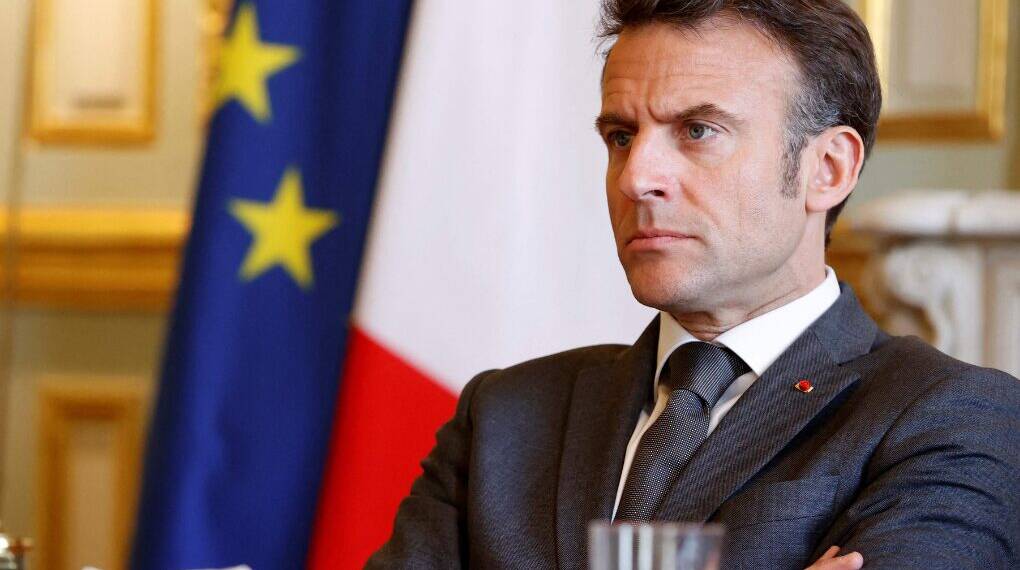A startling directive from France’s Ministry of Health has triggered alarm across Europe, as hospitals have been instructed to prepare for a possible large-scale conflict by March 2026. The order, first revealed by Le Canard Enchaîné, calls on healthcare institutions to get ready for a “major engagement” that could involve treating hundreds of wounded soldiers per day, including not only French troops but also NATO personnel from across the continent.
For many, this move is more than just precautionary planning. It suggests European governments are actively bracing for the possibility of a Russia–NATO confrontation—a scenario experts have long warned could spiral into World War III.
France’s Wartime-Style Directive
According to leaked documents, the French government envisions a scenario where its hospitals act as a support network for both national and allied forces.
The instructions are precise:
Hospitals must expand facilities to handle large numbers of casualties in less than 24 hours.
Medical staff should be prepared to treat foreign NATO soldiers, requiring interpreters to overcome language barriers.
Temporary treatment centers may be set up near airports, ports, train stations, and bus terminals to triage or reroute wounded troops.
The Health Ministry explained the policy as an effort to “anticipate, prepare and respond to the health needs of the population while integrating the specific needs of defense in the health field.”
In other words, France is preparing its civilian healthcare system to operate under wartime conditions.
Public Anxiety: “Why Now?”
The announcement has sparked unease among French citizens. Many are asking why the government suddenly expects hospitals to prepare for World War II-level casualties.
Critics argue the move reflects more than simple readiness. Instead, it signals a real expectation of war—and perhaps even insider knowledge about the trajectory of the Ukraine conflict and rising tensions with Russia.
UK and Germany Follow Suit
France is not acting in isolation. The United Kingdom has reportedly issued similar orders to its institutions, with speculation that London may be preparing to deploy troops to Ukraine or face a direct clash with Russia.
Germany, too, is on edge. General Carsten Breuer, Chief of the German Armed Forces, confirmed that the Bundeswehr and NATO allies would remain on high alert during Zapad 2025, a large-scale Russian military exercise conducted alongside Belarus.
Although Breuer emphasized there is no immediate evidence of an attack hidden behind the drills, he warned: “We will be on guard, not just the German forces, but NATO as a whole.”
NATO’s Growing Fears
At the NATO level, the warnings are becoming increasingly dire. Secretary-General Mark Rutte has painted a grim picture of a potential two-front global war. In his scenario, China moves on Taiwan while Russia simultaneously attacks NATO in Europe.
According to Rutte, Russia may eye the Baltic states—Estonia, Latvia, and Lithuania—as possible targets, given their strategic location and Soviet-era ties.
His warning comes with a sobering assessment: Russia is rearming at a speed that outpaces NATO’s combined production. Moscow is producing more ammunition in three months than NATO manufactures in a year, while receiving steady support from China, Iran, and North Korea.
Macron’s Harsh Words for Putin
French President Emmanuel Macron has long characterized Vladimir Putin as an “ogre” who seeks to expand territory. Analysts believe this perspective explains France’s decision to take military preparedness beyond the battlefield and into the healthcare sector.
Experts forecast that by 2026, a potential conflict zone could emerge in Poland, Estonia, or Lithuania. If that occurs, France expects to serve as a rear base for NATO, treating both domestic and foreign wounded troops.
Peace Talks Faltering
Diplomatic channels between the United States and Russia offer little reassurance. Peace talks remain deadlocked, with disagreements on arms control, Ukraine, and security guarantees.
Think tanks warn that the dialogue could collapse entirely, raising the risk of the current Russia–Ukraine war spilling over into a Russia–NATO war.
Bloomberg recently estimated that a NATO–Russia conflict could carry a $1.5 trillion economic price tag in its early stages alone—a figure that highlights the catastrophic global fallout.
Zapad 2025: A Flashpoint
The most immediate test may come with Zapad 2025, Russia’s upcoming military drills with Belarus. Previous editions have included scenarios simulating missile strikes, large-scale invasions, and amphibious landings.
In 2021, Zapad involved more than 200,000 troops—making NATO increasingly wary that such exercises could provide cover for an actual offensive.
France’s Official Line
France’s Health Minister Catherine Vautrin attempted to calm speculation, stressing that the directive is part of a broader crisis-preparedness policy. She likened it to stockpiling during the COVID-19 pandemic, insisting it is not a response to a specific threat.
Yet France’s wider actions tell a different story:
Increasing defense spending to 3–3.5% of GDP.
Publishing a citizen survival guide, advising households to stockpile food, water, batteries, and first-aid kits.
Now, ordering hospitals to prepare for the wounded of an imminent war.
A Continent on Edge
Taken together, these developments reveal a Europe bracing for the unthinkable.
France is converting its hospitals into potential warfront facilities.
The UK is preparing its institutions for conflict.
Germany is on alert for Russia’s maneuvers.
NATO is warning of a Russia–China axis.
Peace talks are faltering.
Whether these moves are a matter of prudence or a sign of inevitable conflict, the message is chillingly clear: Europe is preparing for the possibility of World War III.
When a government orders hospitals to prepare for hundreds of military casualties per day, it signals more than cautious planning. It suggests that behind closed doors, leaders believe war may be closer than the public realizes.
The question haunting Europe now is simple: Are these preparations just an insurance policy—or are they the first visible steps toward an inevitable clash between NATO and Russia?








